CTIA & PCIA: With SCOTUS Review of FCC "Shot Clock" Decision Pending Shouldn't You Have a "Plan B"
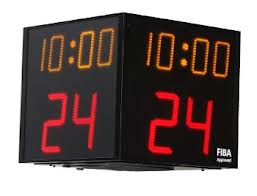
Thanks to the Federal Communications Commission’s (FCC) 2009 shot clock ruling on tower siting, the number of cell sites continues to grow, which are key to providing wireless service in a geographic area. According to the semi-annual survey, there were 28,641 cell sites added this year for a total of 285,561 nationwide.
PCIA’s website and AT&T’s and Verizon’s policy blogs are also silent on the topic. Perhaps everyone is confident that the Supreme Court will uphold the FCC’s implementation of the shot clock rule - but then why did SCOTUS accept the case if it was so obvious?
Buildout of cellular infrastructure is the dominant source of wireless capacity growth despite the constant demands for new spectrum by the major carriers. This wireless capacity growth has numbers benefits for economic growth and international competitiveness. As Preston Marshall said recently at the recent Silicon Flatirons spectrum conference, if you increase mobile spectrum by 50% you basically increase mobile capacity by 50%, not 2000%. Thus timely buildout of infrastructure is key.
Why Does Infrastructure Have to Look Like it was “Designed by Engineers”?
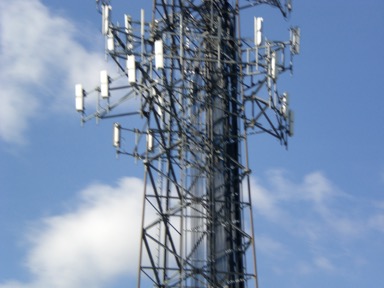
Tip O’Neill famously said “all politics is local”. The cellular establishment no doubt feels that if they lose this case in the Supreme Court they can just pressure Congress to give them a more favorable law that avoids the problems of the present shot clock rule. Perhaps. But if Tip O’Neill is still correct, members of Congress may well be reluctant to pressure constituents to accept undesired cellular infrastructure in their immediate neighborhoods.
But perhaps the cellular establishment should listen to industry insiders like Previously I reported about the comments of Bechtel VP Jake MacLeod, when he stated at a 2009 FCC broadband hearing that “we have reached the end of the line for current design concepts (for cellular towers).” (Bechtel is a major builder of wireless infrastructure.) Or Alcatel-Lucent Wireless Division President Dr. Wim Sweldens who said
But we also have to be honest that in the mobile industry we are creating some problems. The mobile industry is actually contributing a fair amount to pollution...The mobile industry is also obstructing and cluttering our landscapes and cityscapes with more and more and bigger and bigger and uglier and uglier antennas and towers.
A major part of the opposition to infrastructure in suburbia is the inappropriate design that is normally used. If new design techniques could create the stealth bomber that could fly and be invisible to most radars, it is likely that a bold new design approach could develop new infrastructure designs that perform their intended function yet fit in better with their environment.
This was my point in point #5 of my suggested New Year’s Resolutions for the Cellular Industry - a set of topics that drew no interest from the intended audience.
So, CTIA and PCIA, you don’t have to call or contact me. But I sincerely hope that since an adverse SCOTUS decision in this case will hurt us all that you start thinking about a Plan B that does not just depend on lobbyists, but addresses the root design cause of your problem.
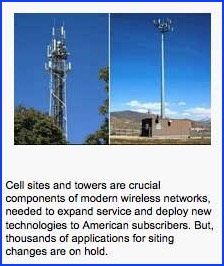 .
.RF Globalnet Article on Cell Base Station Antennas and Their Environment

Last January RF Globalnet, a newsletter for wireless technology types, published an article entitled "Antenna Location Is Not An Architectural Decision: Antenna system design and placement is critical to proper system performance”, by Alfred T. Yerger II of Bird Technologies Group, a frequent contributor to the publication. Mr. Yerger argued that technical issues are the key one in antenna design and shows little interest in architectural issues. He states, “As you can imagine, much of this does not fit well with a landlord’s or building owner’s idea of where the antennas should be placed, or a tower owner’s desire to fill a particular space on the tower.”

My article ends with“The point of this essay is to emphasize that good engineering is more than about making systems that work in a nominal sense, it is about making systems work in the real world with real constraints such as cost, size, weight, battery life, and compatibility with their environment in the case of systems that are intrusive into their locations as many cellular base stations are. It is this engineering to meet practical constraints which is a key difference between engineers and physicists.”
“Mr. Yerger ends his article with, "Remember, antenna location is not an architectural decision!" Perhaps not, but in the real world, antennas and other engineered systems have to work in the environment in which they are placed. Being compatible with the local environment and acceptable to neighbors is part of that. The cellular operators and suppliers should start making some real efforts to examine base station design for suburbia from a fresh piece of paper and stop focusing on using products in today's catalogs unless forced to do a very expensive custom design. Alcatel-Lucent deserves praise for ‘thinking outside the box’ with their new concept (lightRadio™), whether or not it ever has a significant role. The rest of industry should rethink its current approaches, also.”
Readers are invited to read both articles and post here with their views of the proper role of architecture/city planning issues in antenna system design. All responses will be posted here subject to constraints similar to present broadcasting FCC limits.
Best wishes to all for a Happy Thanksgiving!
NAB Sponsored State-of-the-Art Antenna Research for "Rabbit Ear" Replacement
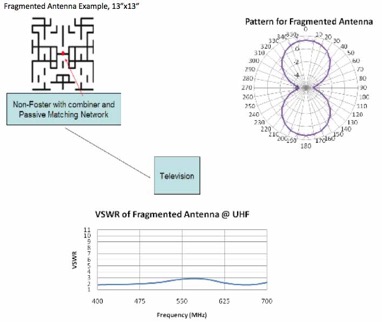
On August 17, NAB unveiled an impressive high tech report they had commissioned from a not well known, but very well qualified military contractor on a possible replacement for the ubiquitous “rabbit ears” used in houses that depend on over-the-air reception. It is commendable that in an effort to reverse the decline in over-the-air viewers NAB this time decided to pay for good engineering rather than the usual lawyers and lobbyists.
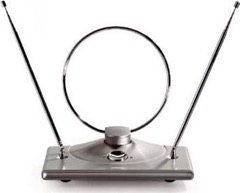
MegaWave Corp., of Devens, MA had done a study for NAB in 1995 on available antenna technology for improved set top performance and NAB’s FASTROAD (Flexible Advanced Services for Television & Radio On All Devices) program, a technology advocacy program, hired them again to survey new antenna technology and the opportunities resulting from decreased TV band spectrum. (MegaWave’s hometown is next to Ft. Devens, for many years a major Army Security Agency installation. So it can be surmised that they have dealt with “3 letter agencies” other than FCC.)
The report is fascinating for us techies, reviewing all sorts of interesting antenna technologies not well known outside of antenna researchers and the military industrial complex. The pictures at the top of this post shows one antenna they spent a lot of effort exploring and its performance.
The report points out than many advanced technologies depend on feedback from the DTV receiver on how well it is receiving the signal. In 2007 CEA developed a standard (CEA-909) for such signals from the DTV receivers to the antenna, but receivers with this interface are rare in the US market. In Europe, a comparable interface is more common. (One wonders if the recent spat between NAB and CEA over FM receivers in cell phones will make this type of interindustry cooperation any easier.)
The MegaWave report ends with these conclusions:
- There have been significant and potentially useful antenna design methods and actual hardware developed over the past 15 years that will improve the performance of low‐profile, compact indoor/set‐top DTV antennas.
- In the area of electro‐magnetic computational and design optimization methods Genetic Algorithms (GA) and the Central Force Optimizer (CFO) have proven themselves as powerful tools in the design of broadband, compact antennas.
- Using the above, we have included an example of an advanced antenna technology, specifically the Fragmented Antenna as part of this project. We submit that it would be nearly impossible for a human to replicate its design and performance.
- The Non‐Foster active broadband matching technology and its required semiconductors have matured to the point where they could be incorporated into a commercial indoor/set‐top design to provide a matched antenna where it is considered as being electrically small. In the example shown below it would be used to provide acceptable performance with the Fragmented dipole within the 54‐88 MHz band. Other element geometries are also possible.
- Many of the other advancements listed in Table 1‐1, specifically 2.4 through 2.6, require a CE‐909‐A type interface with the DTV receiver, and while potentially useful if and when manufacturers start adding this feature to their products they offer no practical improvement for the near term.
- The technologies designated as 2.7 through 2.10 while interesting are either too embryonic (2.7 & 2.8), too complicated and too large (2.10) or not well vetted (2.9) to be considered in the near term.
Congratulations to NAB for this technological tour de force.
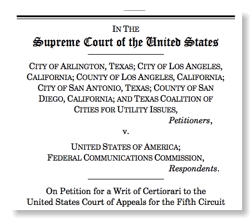



![Validate my RSS feed [Valid RSS]](valid-rss-rogers.png)

